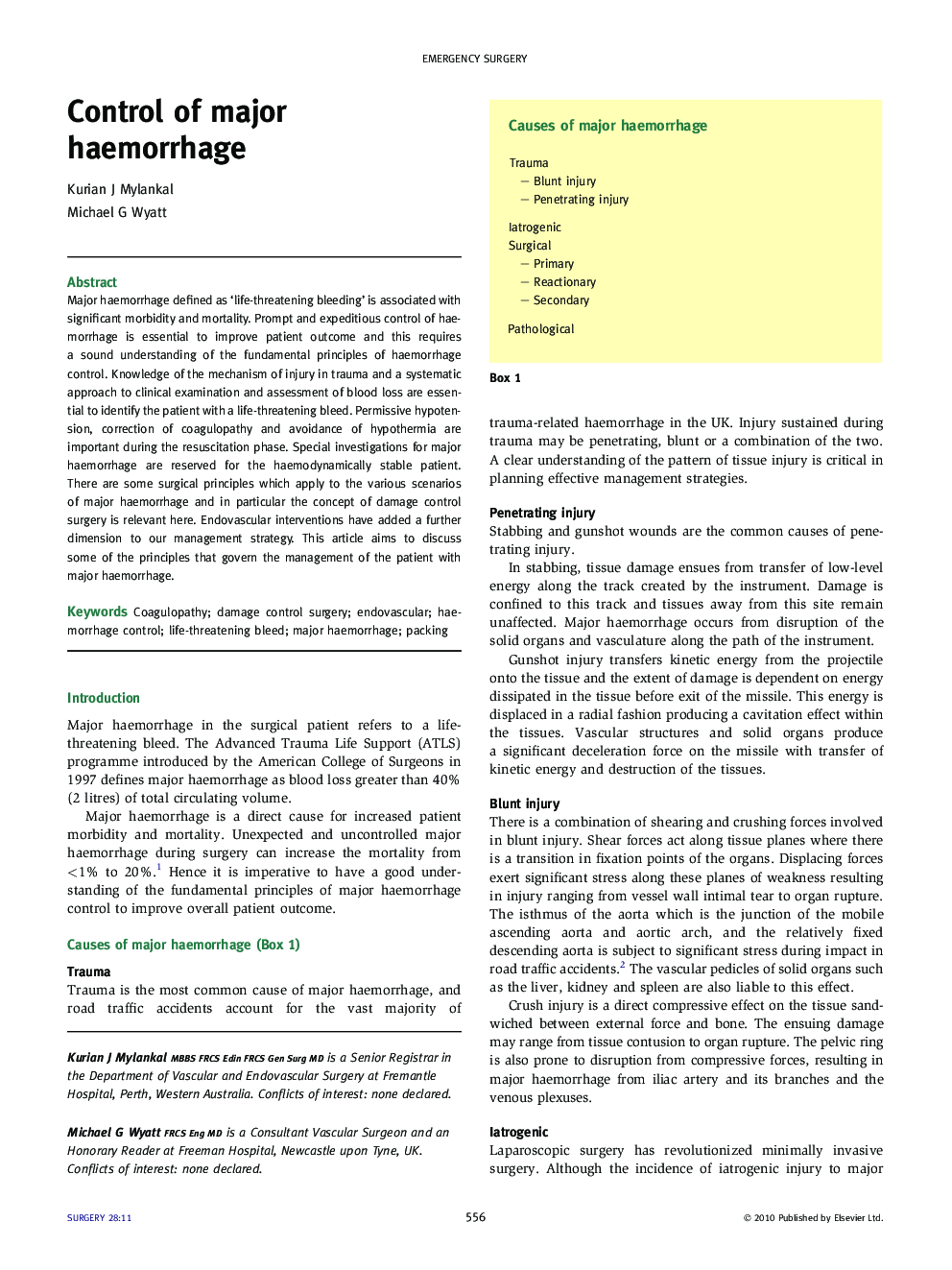| کد مقاله | کد نشریه | سال انتشار | مقاله انگلیسی | نسخه تمام متن |
|---|---|---|---|---|
| 3839407 | 1247786 | 2010 | 7 صفحه PDF | دانلود رایگان |

Major haemorrhage defined as ‘life-threatening bleeding’ is associated with significant morbidity and mortality. Prompt and expeditious control of haemorrhage is essential to improve patient outcome and this requires a sound understanding of the fundamental principles of haemorrhage control. Knowledge of the mechanism of injury in trauma and a systematic approach to clinical examination and assessment of blood loss are essential to identify the patient with a life-threatening bleed. Permissive hypotension, correction of coagulopathy and avoidance of hypothermia are important during the resuscitation phase. Special investigations for major haemorrhage are reserved for the haemodynamically stable patient. There are some surgical principles which apply to the various scenarios of major haemorrhage and in particular the concept of damage control surgery is relevant here. Endovascular interventions have added a further dimension to our management strategy. This article aims to discuss some of the principles that govern the management of the patient with major haemorrhage.
Journal: Surgery (Oxford) - Volume 28, Issue 11, November 2010, Pages 556–562